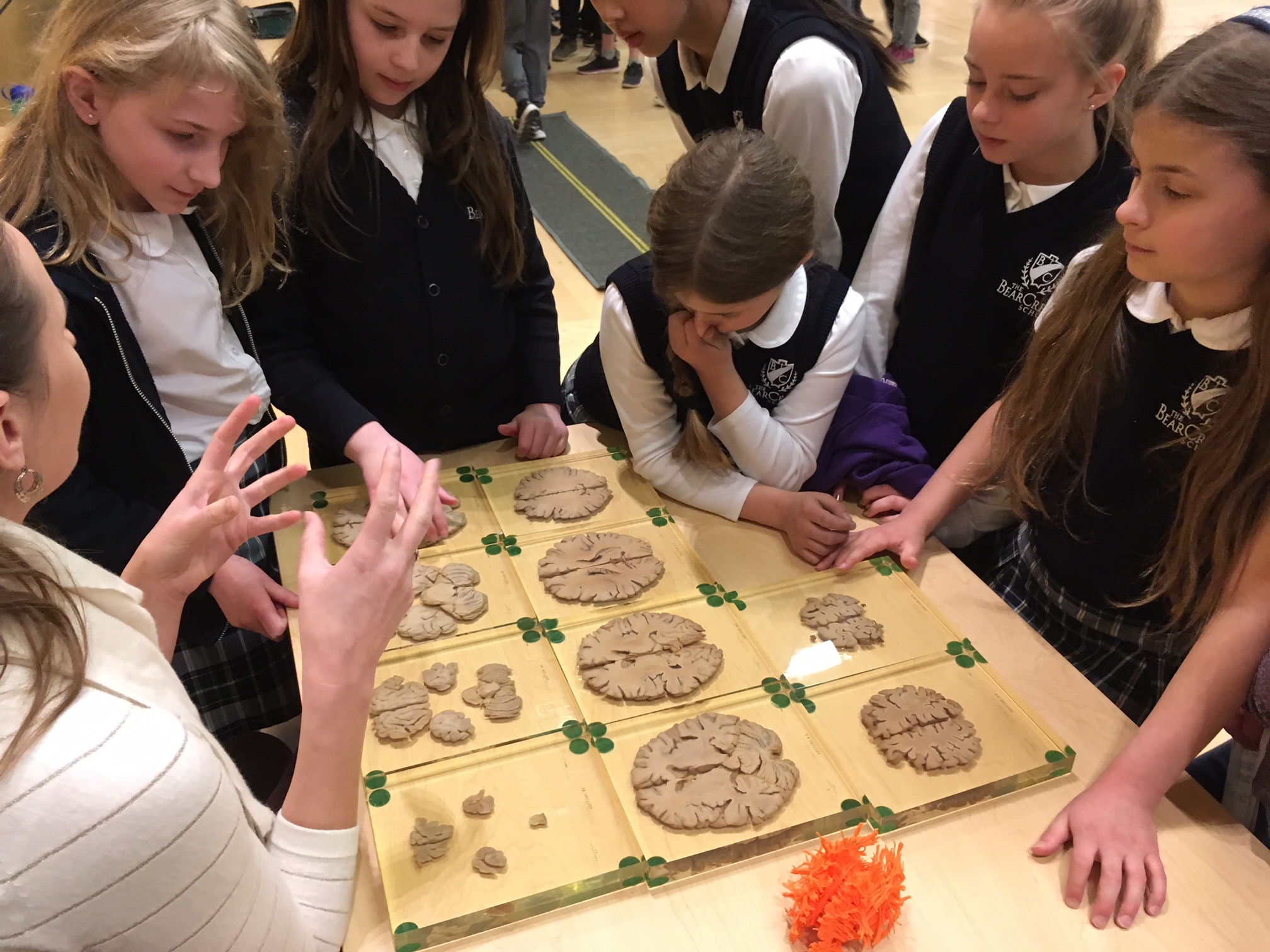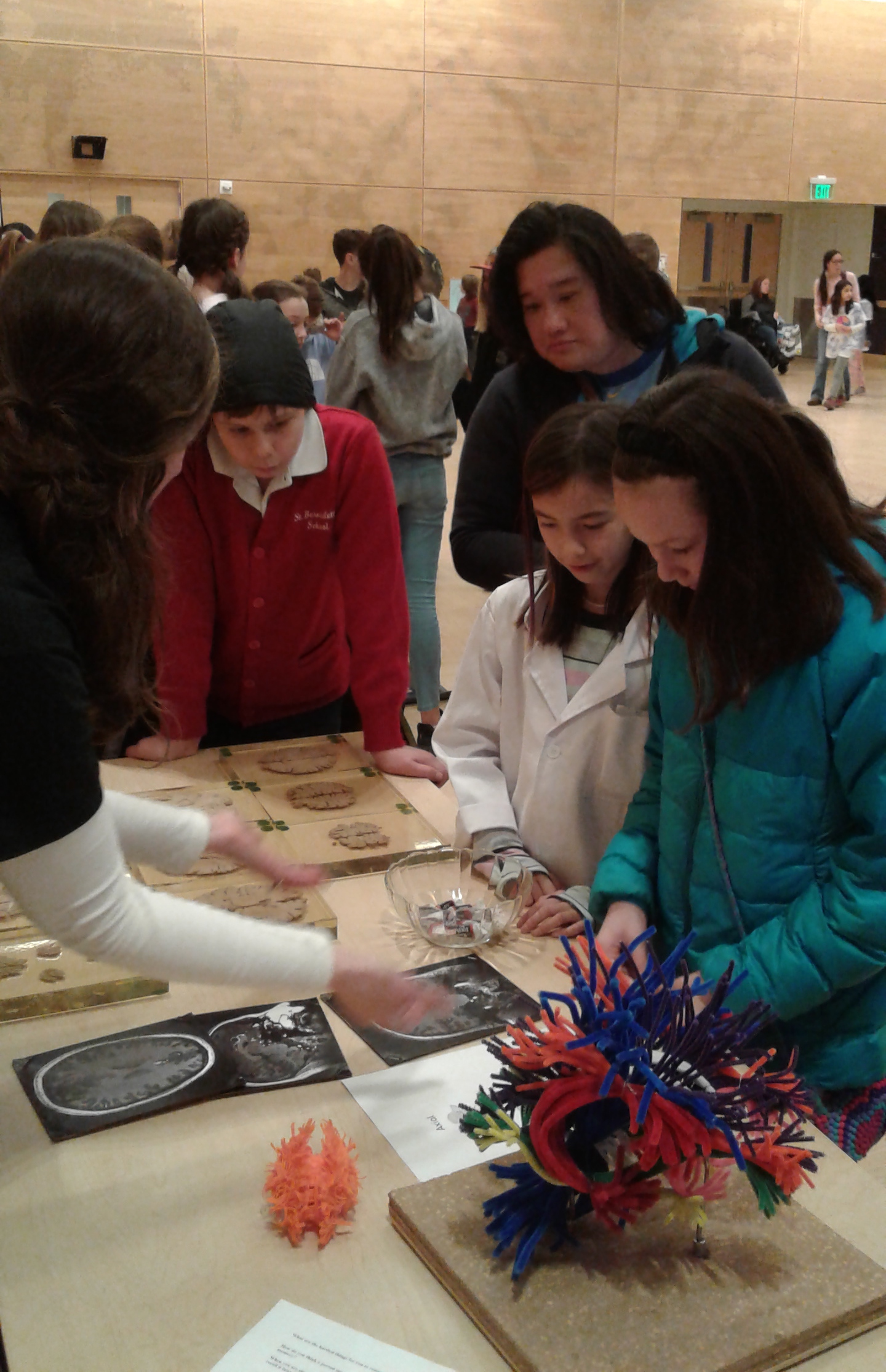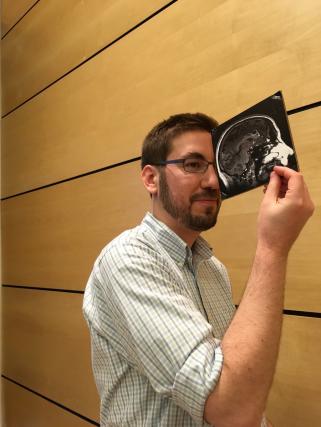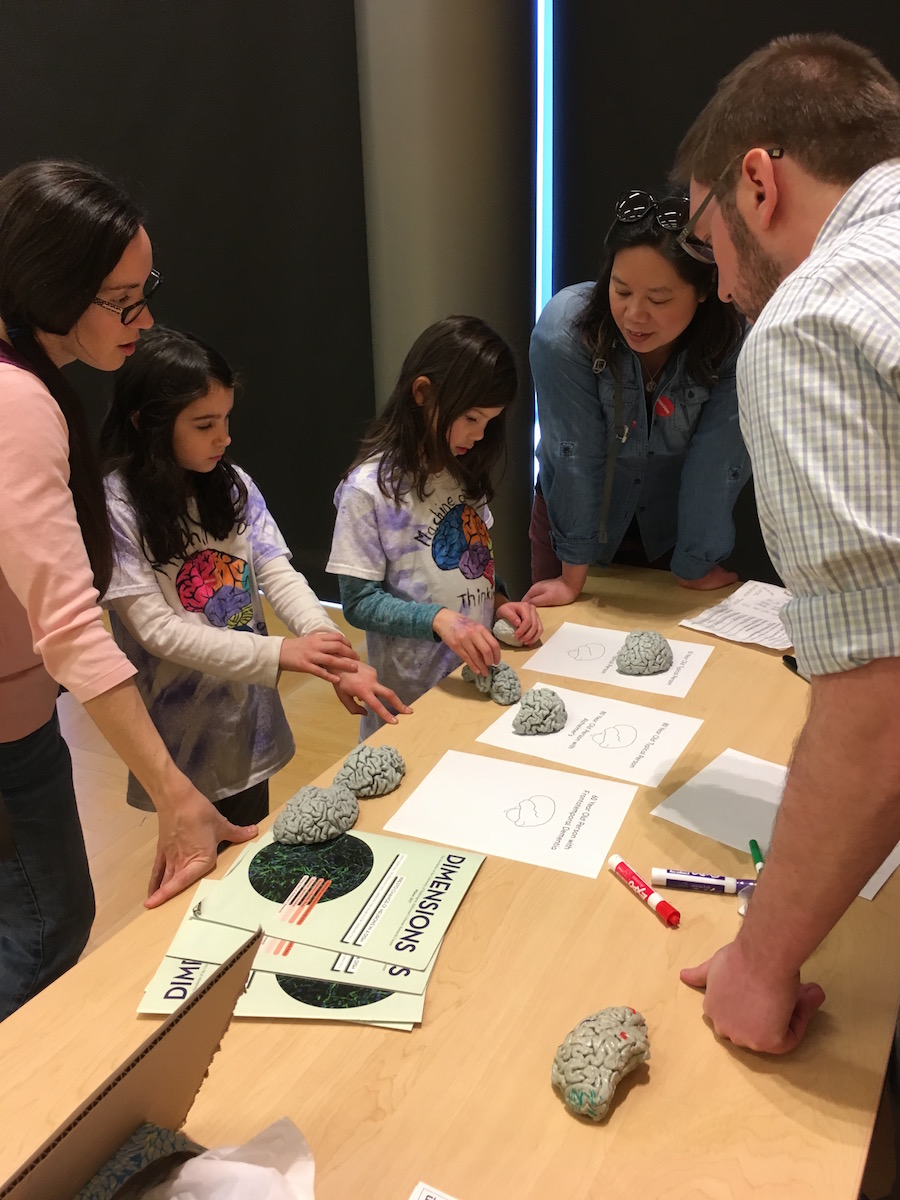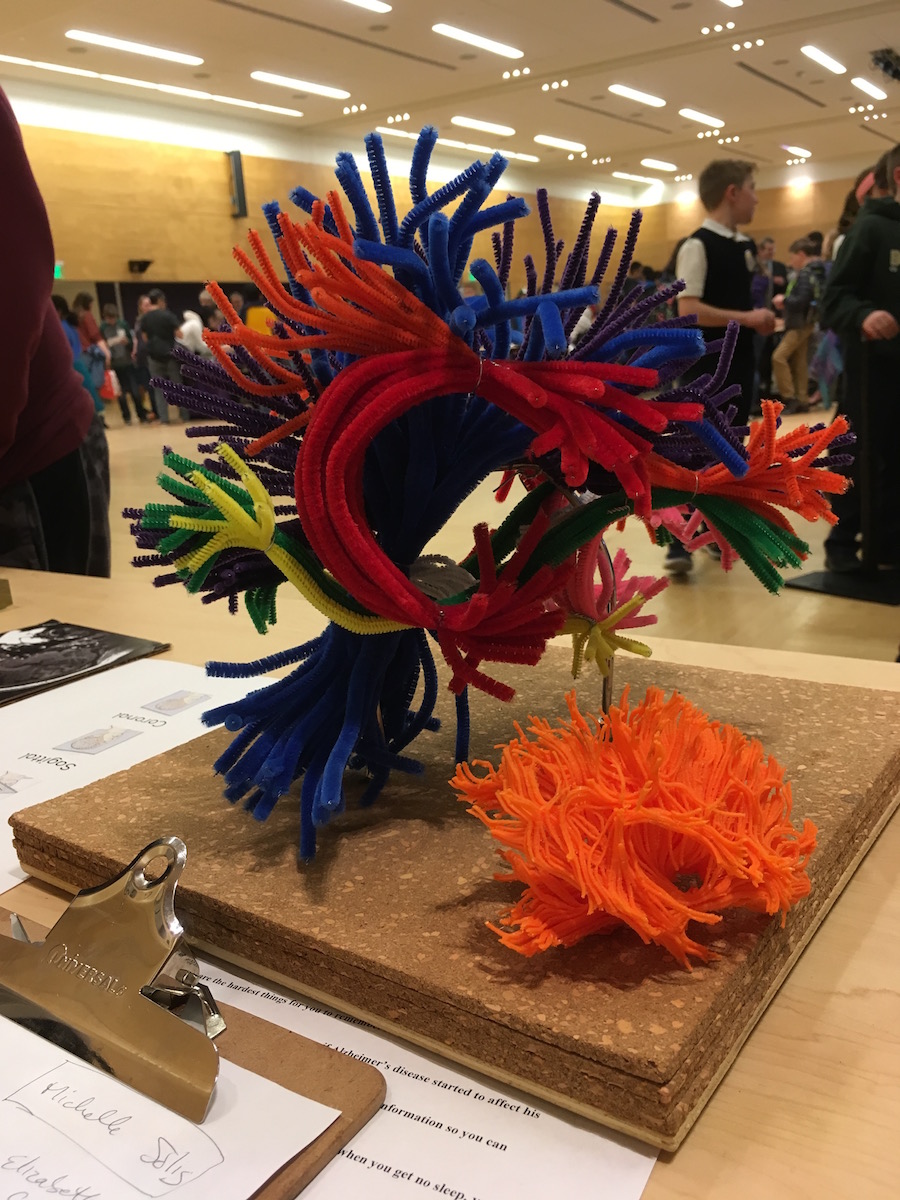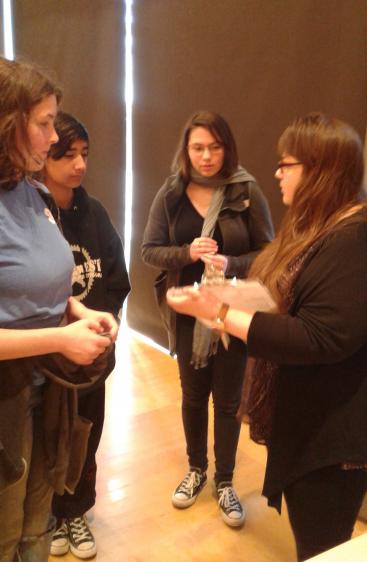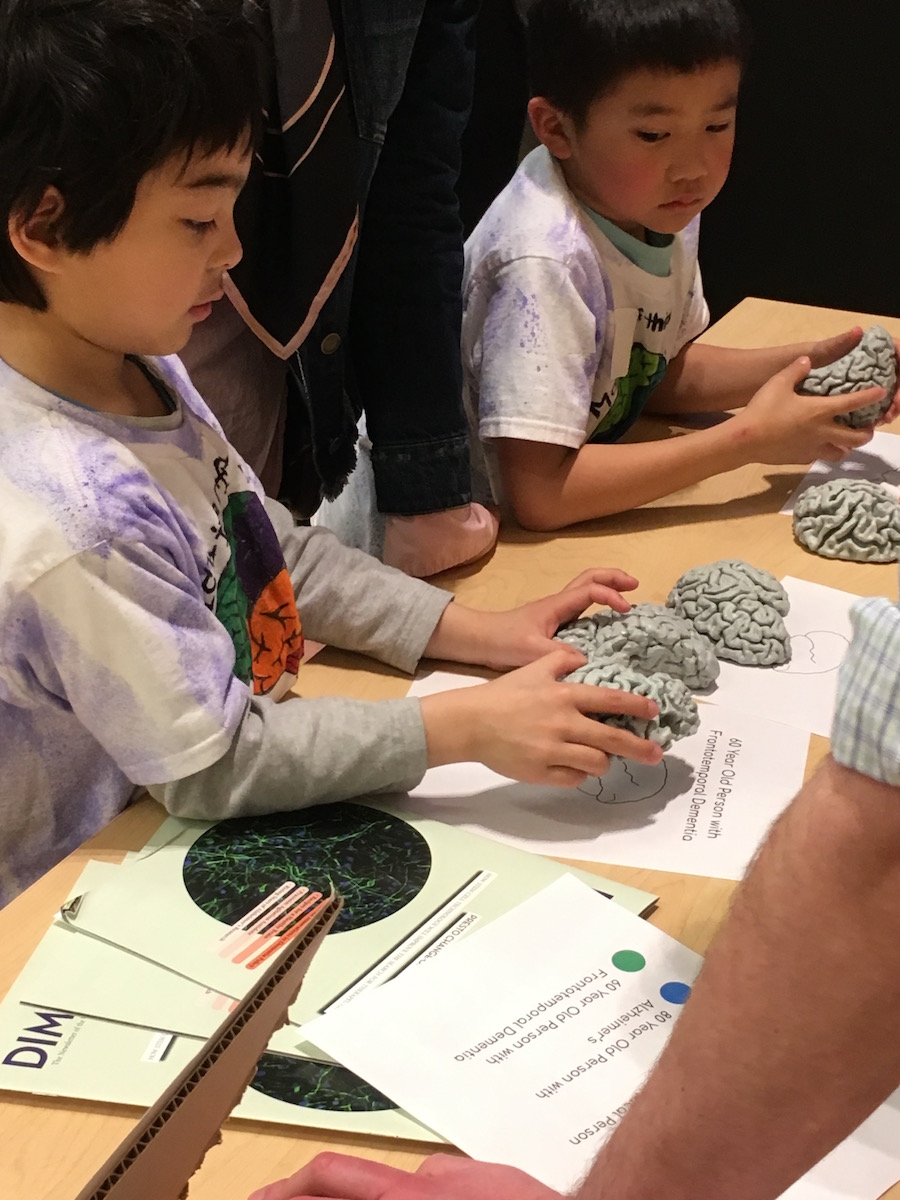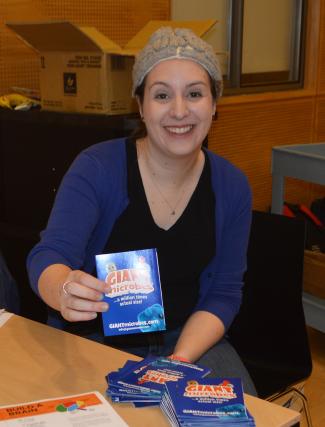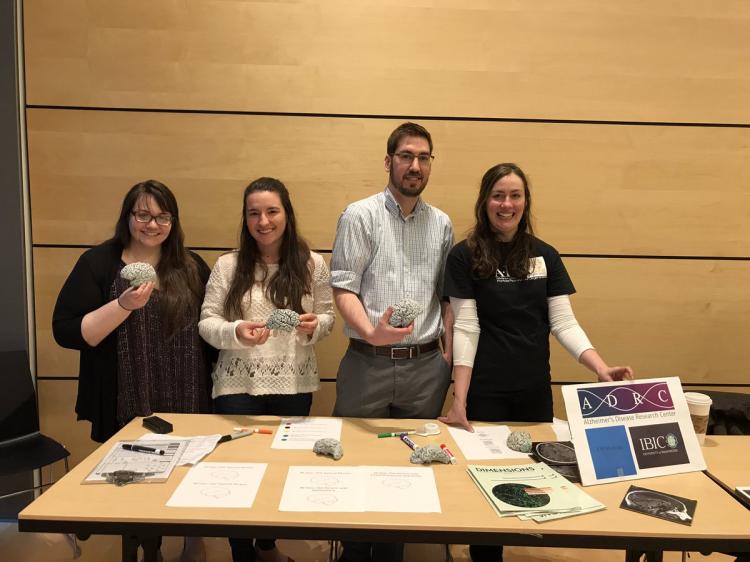
From left, Christina Caso (Radiology/ADRC), Julia Sweigert (Radiology/IBIC), Dan Peterson (Radiology/IBIC), Genevieve Wanucha (MBWC/ADRC), and (taking the picture) Kimberly Lowell (ADRC)
On March 6, 2018, over 700 elementary, middle and high school students flooded onto the University of Washington campus to learn about the brain and neuroscience research. It was the 2018 open house for Brain Awareness Week (BAW), a nationwide effort organized by the Dana Alliance for Brain Initiatives and the Society for Neuroscience to promote the public and personal benefits of brain research.
Eric Chudler, UW Bioengineering research associate professor and executive director of the Center for Sensorimotor Neural Engineering, has organized the yearly BAW event for decades. He remembers the first BAW Open House, in 1998, taking place in a small room in the UW Health Sciences Building. Now, the production takes over one of the biggest venues available on campus, the north ballroom of the Husky Union Building.
After the "Brain Assembly" with Dr. Chudler, the students visited exhibits set up by University of Washington departments, such as the UW Graduate School of Neuroscience, and other organizations. They got the opportunity to hold real human brains, wear prism goggles that distort one's field of vision, and learn about how bird brains produce songs like human brains produce speech. They learned how to record and view the electrical signals produced by muscle movements using a electromyography (EMG) machine and laid inside a mock brain scanner for young children from the UW Autism Center.
"BAW a great opportunity to learn about brain science by participating in fun activities," says Elizabeth Crummy, a graduate student in the Ferguson Lab in the UW Graduate Program in Neuroscience who helped with the event. "It's so important for kids to understand how the brain works in health and disease."
At the 'Memory and the Brain' exhibit, hosted by the UW Memory and Brain Wellness Center (MBWC), the UW Alzheimer's Disease Research Center (ADRC), and the UW Integrated Brain Imaging Center (IBIC), kids of all ages explored all the ways to see inside the human brain and diagnose brain conditions such as Alzheimer's disease. A big attraction was a vintage collection of slices of a preserved human brain encased in thick glass, revealing the different structures and fissures that become visible as the slices go deeper into the brain. For many of the younger students, it was the very first time that they had seen the inside of a real human brain.
For a modern-day method of photographing the brain, we showed them MRI brain scans obtained in the UW IBIC imaging lab. They picked them up and held them up to their classmates' heads, guessing the orientation at which the MRI machine captured each cross-sectional image. And, they learned how brains scans can be useful in determining the cause of memory loss or other symptoms of Alzheimer's disease.
Dan Peterson, a research scientist in the UW Department of Radiology/IBIC, designed a hands-on activity for kids involving the 3-D printed brains he makes based on structural MRI scan data. They tried to guess which of the 3-D models represent the brain of a 10-year-old, a 30-year-old, a typical 80-year-old, an 80-year-old with Alzheimer's disease, and a 60-year-old with frontotemporal degeneration, a less common cause of dementia. It was a difficult and cognitively stimulating task, as differences in the size and shape of brains varying in age and state of health may not be obvious to the untrained eye.
"I remember going to events like this when I was a kid, and it helped put me on the path that I am on now," says Peterson. "It was really great to be able to share some of the things we've learned with the wider community. Going into it I was a little concerned that what our activities were too advanced, but it went really well. Kids absorb information differently than adults, and in some ways it's easier to talk to them about big concepts. Memory loss and dementia are difficult subjects for adults, but I found that it wasn't as scary or embarrassing for children. The 3D prints really did a lot of work in explaining what happens to the brain of someone with Alzheimer's disease."
For yet another way to visualize the brain, we showed off a small 3D print of the fiber pathways of the brain as mapped by diffusion tensor imaging (DTI) technology, also created by Dan Peterson, as well as a colorful pipe cleaner sculpture depicting the separate bundles of fiber pathways that connect areas of the brain together.
"This is a lot of brains," commented on elementary school student, after reviewing our entire exhibit. "Mind boggling," we agreed.
Students had a chance to test their own memory by taking a test similar to the one used in clinical research studies to assess participants' memory function and change in ability over time. Here is Christina Caso, a research analyst in the UW Department of Radiology, administering some of the memory test questions to high school students.
Looking out over the young students milling around the exhibits and asking questions of scientists made us think about the potential of this event to get kids interested in a field of brain science in a lasting way. "Just think about it," says Julia Sweigert, a research coordinator in the Kleinhans Lab, UW Department of Radiology. "At least one of these kids will go on to a career in brain science—at least! That would be so meaningful."
Wearing her grey knitted brain cap, Kaitlyn Casimo made sure the BAW Open House went off without a hitch. She is the student coordinator for outreach and education at CSNE and a PhD candidate in the UW Graduate Program in Neuroscience and affiliate of IBIC. Read more about her brain science outreach efforts in Scientists, Could you Explain Your Research to Kids?
Thanks to our 2018 BAW team!
Daniel Peterson, Research Scientist, UW Department of Radiology/Integrated Brain Imaging Lab (IBIC)
Genevieve Wanucha, Science Writer, Memory and Brain Wellness Center/ADRC
Christina Caso, Research Analyst, UW Department of Radiology, ADRC
Kimberly Lowell, Research Coordinator, ADRC
Julia Sweigert, Research Coordinator, Kleinhans Lab, UW Department of Radiology/ IBIC.
The UW Brain Awareness Week Open House is supported by the Pacific Cascade Chapter of the Society for Neuroscience, the Center for Sensorimotor Neural Engineering and the UW Graduate Program in Neuroscience. To find resources about teaching neuroscience to kids, visit the UW Brain Awareness Week website 'Neuroscience for Kids," run by Dr. Eric Chudler.
—Genevieve Wanucha
